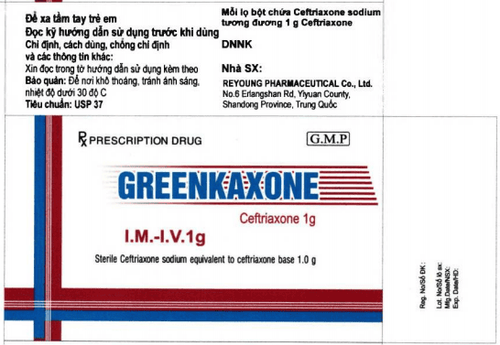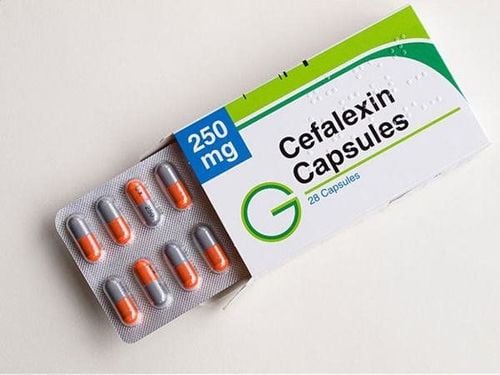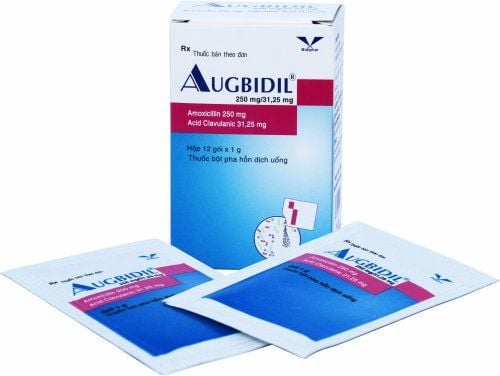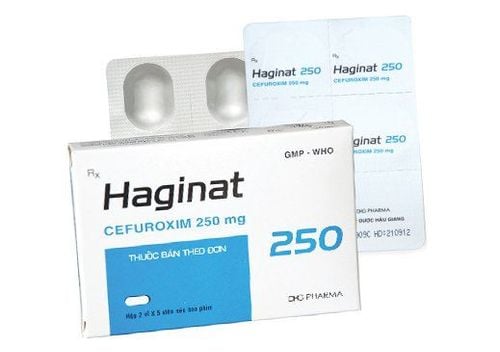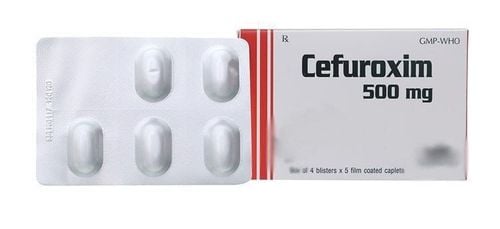This is an automatically translated article.
Spralin medicine has the main ingredient Cefazolin, which is made in the form of a powder for injection. The drug is indicated for the treatment of respiratory tract infections, skin and soft tissue infections, bone and joint infections... Let's understand the uses of Spralin and the important notes when using the drug in the article below.
1. What is Srealin?
Sprealin is a prescription drug whose main ingredient is Cefazolin 1g. Srealin is prepared in the form of powder for injection, each box includes a box of 1 vial + 1 ampoule of distilled water for injection of 5 ml.
2. Uses of Spralin
Spralin is indicated for the treatment of the following cases:
Respiratory tract infections Skin and soft tissue infections Bone and joint infections Some cases of sepsis and endocarditis Some infections urogenital and biliary tract Prophylaxis: Intraoperative use of cefazolin may reduce the incidence of postoperative infections in patients undergoing surgery with a high risk of infection or in surgical sites where possible infection may occur. particularly serious postoperative infections.
3. Dosage and treatment of Spralin
3.1. Dosage Usage: Cefazolin is injected deep intramuscularly, slowly injected into a vein for 3-5 minutes or intravenously
Dosage:
For adults: the usual dose is 0.5g - 1g, 6 - 12 hour/time. The usual maximum dose is 6g/day.
For children:
Newborns under 1 month of age: Dosage is 20mg/kg body weight, every 8-12 hours/ Because the safety of the drug in premature infants under 1 month of age has not been studied. Therefore, the use of this drug is not recommended for children. Children over 1 month of age: Dosage is 25-50mg/kg body weight/day, divided into 3 or 4 times/day. In case of severe infection, the maximum dose can be increased to 100mg/kg body weight/day, divided into 4 times/day. For patients with renal impairment:
Creatinine clearance less than or equal to 55ml/min: use usual dose, every 6 hours/dose Creatinine clearance 11-34ml/min: 1⁄2 usual dose, every 12 hours/dose Creatinine clearance less than or equal to 10ml/min: 1⁄2 usual dose, every 18-24 hours/dose For the prevention of intraoperative infections: 1g injection dose 0.5-1 hour before surgery. In case of prolonged surgery, inject 0.5-1g dose during surgery. After surgery, injection dose of Srealin 0.5 - 1g, 6-8 hours / time in 24 hours or in 5 days for some cases.
3.2. In case of overdose, missed dose Overdose: In case of using Speralin in excess of prescribed dose and having abnormal symptoms, it is necessary to immediately contact the nearest medical facility.
Missed dose: During the use of Srealin, patients need to follow the doctor's treatment schedule to avoid the occurrence of missed doses that reduce the effectiveness of treatment. If you miss a dose of Srealin, use the missed dose as soon as you remember. But if it is too close to the next dose, skip the missed dose and take the next dose as scheduled. Patients should not double the dose of Srealin, because it can cause an overdose.
4. Side effects of Spralin
During the use of the drug Srealin may experience some specific side effects as follows:
Almost all cephalosporins can cause reactions ranging from neutropenia to agranulocytosis. All cases occurred due to high cumulative doses during a course of treatment. Immune hemolytic anemia is often seen during treatment with very high doses. Some documents have demonstrated that cefazolin interferes with the synthesis of vitamin K-dependent coagulation factors. Therefore, in patients at risk (thrombocytopenia, history of bleeding, ...) should be noted. Monitor bleeding time Liver dysfunction, impaired consent, history of gastrointestinal disease and nutritional deficiencies may increase the risk of bleeding in patients treated with cefazolin. Cefazolin is a very potent seizure-inducing agent because of its two heterocycles at positions 3 and 7, and is a tetrazol derivative that exhibits similar behavior to the convulsive phenyltetrazol.
5. Notes when using Spralin
5.1. Contraindications The use of Srealin is contraindicated in cases with a history of allergy to cephalosporin antibiotics.
5.2. Precautions when using the drug During the use of Spralin, the patient should pay attention to the following issues:
Must stop the drug immediately if there is an allergic reaction to cefazolin. Patients should be treated with commonly used drugs such as corticosteroids, adrenaline, antihistamines or vasoconstricting amines Caution should be taken when prescribing broad-spectrum antibiotics to patients with a history of gastrointestinal disease, especially colitis. colon. Long-term use of cefazolin may cause overgrowth of non-susceptible organisms. Therefore, it is necessary to monitor the patient carefully. If superinfection occurs during treatment, appropriate measures should be taken. It is necessary to reduce the daily dose of cefazolin in patients with impaired renal function. Do not administer cefazolin by injection into the cerebrospinal fluid. There have been several reports of severe CNS toxicity, including convulsions, with cefazolin administration by this route. For pregnant women: Cefazolin is generally considered safe to use during pregnancy. 2 g cefazolin can be given intravenously, every 8 hours, for the treatment of pyelonephritis in pregnant women in the second half of pregnancy. However, there are no adequate and well-controlled studies in pregnant women. Because animal reproduction studies are not always predictive of human response, Spralin should be used during pregnancy only when clearly needed. For women who are breast-feeding: Although the concentration of cefazolin in breast milk is low, three potential problems can occur in the infant: alteration of the gut microbiota, a direct effect on the nursing infant, and confounding results when needed. Antibiotic testing in children with fever. Therefore, candida thrush, diarrhea, and rash should be observed in breastfed infants of mothers receiving cefazolin. In the process of using Spralin, patients should pay attention to follow the doctor's instructions, carefully read the notes before using to be able to bring the highest treatment effect, limit possible side effects. happen.




